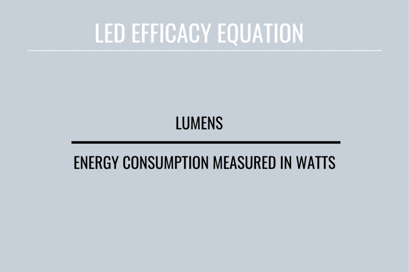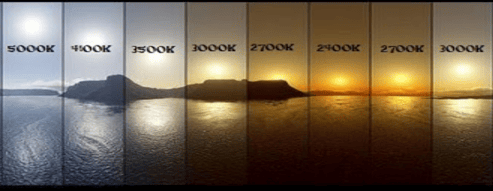The following is a guide to some LED terms to know. Knowing these LED lighting terms can help you make smart decisions and save you money, time, and headaches down the road.
Interested in investing in a new LED lighting system for your facility but aren’t sure where to begin? The following is a guide to some LED terms to know. Knowing these LED lighting terms can help you make smart decisions and save you money, time, and headaches down the road.
1. Efficacy
“Efficacy” refers to how a light fixture’s components and qualities are characterized and valued. Technically, efficacy means lumens divided by watts, so the higher the efficacy of a fixture, the better it performs. Recent fixtures generally offer 140-180 lumens per watt, and older fixtures typically offer 100 lumens per watt.
This is why you should be wary about LED lights with low lumens. The lights will likely be cheaper, but they may be older stock that is both outdated and less efficient.

2. Foot Candles
Foot candles are a factor of the amount of light delivered on the surface. Certain facilities are required to have a certain number of foot candles to meet regulations. For example, an indoor tennis facility that hosts high level tournament play may require over 100 foot candles across the playing area, while another tennis facility that hosts lower level events may require 70-80 foot candles.
When developing a lighting plan for your facility, you should be sure to verify the existing light levels and understand what sort of light levels are recommended or required for the level of tennis played at your facility.

3. Color Temperature
The term “color temperature” describes the color of the light that emanates from the chip within the fixture. The color temperature is measured in degrees of kelvin and falls within a spectrum, with warm, yellow light at one end (around 2700K), and cool white/blue light (around 6500K) at the other end.

Color temperature exists with traditional lighting as well, but it has become more prominent with LED lighting because LED chips offer multiple color temperatures.
You should explore the color temperature of the lighting you are considering to ensure that it matches with the lighting’s environment. For example, in many gym spaces, 3000-4000K lights are preferred, but in an indoor tennis court area, 5000K lights would be needed.
4. Heat
You may think that LED lights do not give off any heat, but actually all lighting produces some heat. The biggest detriment to an LED chip is heat, so it’s important to provide sufficient room for airflow for the LED lighting fixture. That way, the heat can be effectively dispersed.
5. Rebates
Rebates are almost always available for LED lighting purchases! These rebates–along with the general energy savings that LED lights offer over time–will help to offset the initial costs of the LED purchase. You should definitely ask if there are utility rebates available in your area, since rebates are available almost everywhere.
LED lighting is evolving so quickly that it’s more important than ever to understand what features are available and what the technical terms mean before making a purchase.
The best way to get all the information discussed here about any lighting that you are considering is to examine the “spec sheet.” Most commercial LED lighting distributors and suppliers offer spec sheets for their products.
Contact Sports Interiors to get detailed information, spec sheets, and more resources for your next lighting project.

